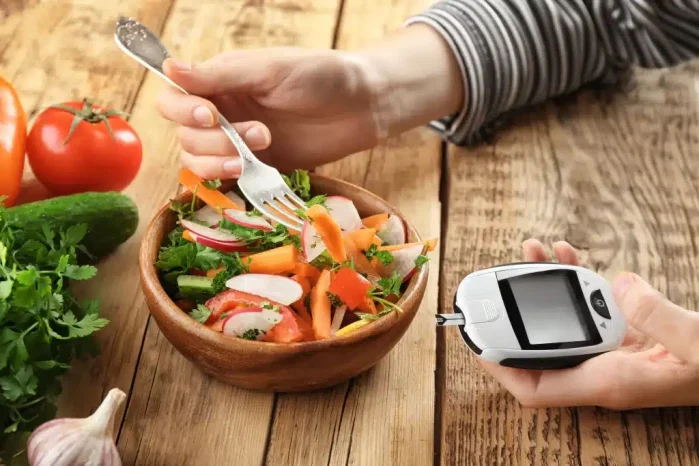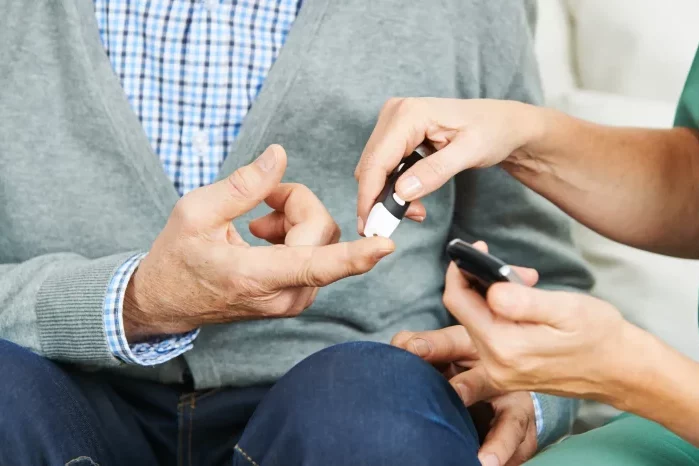High blood sugar, or hyperglycemia, occurs when there is too much glucose in the bloodstream. This condition is particularly concerning for individuals with diabetes, a chronic disease where the body either does not produce enough insulin (type 1 diabetes) or cannot effectively use the insulin it produces (type 2 diabetes). Consistently high blood sugar levels can lead to a host of health complications including nerve damage, cardiovascular disease, kidney failure, and vision problems.
Maintaining blood sugar levels within a target range is crucial for preventing these complications. This requires a comprehensive approach involving medication, physical activity, and, importantly, dietary management. This article will delve into specific foods and food categories that should be avoided to help manage high blood sugar, as well as provide practical tips on making healthier food choices.
Foods to Avoid
High-Carbohydrate Foods
Carbohydrates are one of the primary macronutrients and are found in a variety of foods. When consumed, carbohydrates are broken down into glucose, which can cause a spike in blood sugar levels. For individuals with high blood sugar, it is essential to limit the intake of high-carbohydrate foods. Some of the common high-carbohydrate foods include:
Bread: Particularly white bread made from refined flour.
Pasta: Especially those made from refined wheat.
Rice: White rice, in particular, has a high glycemic index.
Potatoes: While nutritious, potatoes are high in carbohydrates and can rapidly increase blood sugar levels.
Cereals: Many breakfast cereals contain high levels of sugar and refined grains.
Sugary Snacks and Desserts
Foods high in sugar can cause rapid spikes in blood sugar levels. These include:
Candies and Chocolates: High in added sugars and often low in nutritional value.
Pastries and Cakes: Made with refined flour and sugar, these desserts can significantly impact blood sugar.
Cookies and Biscuits: Often contain both sugar and refined carbohydrates.
Ice Cream: While tempting, ice cream is laden with sugar and fat.
Sweetened Beverages
Beverages sweetened with sugar can contribute to high blood sugar levels. These include:
Sodas and Soft Drinks: Packed with sugar, these drinks can cause an immediate spike in blood sugar.
Fruit Juices: Even 100% fruit juices can have a high sugar content without the fiber that whole fruits provide.
Energy Drinks: These often contain large amounts of sugar along with caffeine.
Sweetened Coffee and Tea: Drinks with added sugars and flavored syrups can be surprisingly high in sugar.
Understanding Carbohydrates
Carbohydrates are a vital energy source, but they have a significant impact on blood sugar levels. Understanding the role of carbohydrates and the differences between types can help manage high blood sugar.
Simple Carbohydrates vs. Complex Carbohydrates
Simple Carbohydrates: These are broken down quickly by the body and can cause rapid increases in blood sugar. They are found in foods like sugar, honey, syrups, and many processed foods.
Complex Carbohydrates: These take longer to break down, leading to a slower and more gradual increase in blood sugar. They are found in foods like whole grains, legumes, and vegetables.
Opting for complex carbohydrates over simple ones can help maintain more stable blood sugar levels.
Glycemic Index
The glycemic index (GI) is a system that ranks foods based on how much they raise blood sugar levels. Foods with a high GI cause a rapid spike in blood sugar, while those with a low GI result in a slower, more gradual increase.
High GI Foods: White bread, most breakfast cereals, white rice, and potatoes.
Low GI Foods: Whole grains, legumes, non-starchy vegetables, and most fruits.
Using the glycemic index as a guide can help individuals with high blood sugar make better dietary choices.
Healthy Alternatives
Making healthier food choices is crucial for managing high blood sugar. Here are some alternatives to the foods that should be avoided:
Instead of White Bread, Choose Whole Grain Bread: Whole grain bread has more fiber and a lower glycemic index.
Instead of Regular Pasta, Choose Whole Wheat or Legume-based Pasta: These options have more fiber and nutrients.
Instead of White Rice, Choose Brown Rice or Quinoa: These grains have a lower glycemic index and more fiber.
Instead of Sugary Snacks, Choose Fresh Fruit or Nuts: These provide natural sweetness and essential nutrients.
Instead of Sweetened Beverages, Choose Water, Unsweetened Tea, or Sparkling Water: These options have no added sugars and are hydrating.
Portion Control
Managing portion sizes is vital for controlling blood sugar levels. Even healthy foods can cause blood sugar spikes if eaten in large quantities. Here are some tips for portion control:
Use Smaller Plates: This can help visually reduce portion sizes.
Measure Portions: Use measuring cups or a food scale to ensure proper serving sizes.
Read Serving Sizes on Labels: Be aware of what constitutes a serving size and adhere to it.
Practice Mindful Eating: Eat slowly and savor your food, which can help you recognize when you’re full.
Meal Planning Tips
Planning meals can help maintain stable blood sugar levels throughout the day. Here are some tips for effective meal planning:
Balance Your Plate: Include a mix of lean proteins, healthy fats, and complex carbohydrates.
Snack Smart: Choose snacks that have a balance of protein and fiber to keep blood sugar levels stable.
Regular Meal Times: Eat at consistent times each day to help regulate blood sugar.
Pre-plan Meals: Prepare meals in advance to avoid the temptation of unhealthy options.
Incorporate Non-Starchy Vegetables: These are low in carbohydrates and high in fiber and nutrients.
Reading Food Labels
Understanding food labels can help identify hidden sugars and carbohydrates. Here are some tips:
Check the Carbohydrate Content: Look at the total carbohydrates per serving.
Identify Added Sugars: Ingredients such as high fructose corn syrup, cane sugar, and syrup indicate added sugars.
Understand Serving Sizes: Ensure that the serving size on the label matches what you actually consume.
Look for Fiber Content: Foods high in fiber can help regulate blood sugar.
Professional Advice
While these tips provide a general guide, it is essential to consult with healthcare providers for personalized dietary advice. A registered dietitian or diabetes educator can help create a meal plan tailored to individual needs and preferences, ensuring that blood sugar levels are effectively managed.
Conclusion
Managing high blood sugar requires a multifaceted approach, with diet playing a crucial role. By avoiding high-carbohydrate foods, sugary snacks, and sweetened beverages, and choosing healthier alternatives, individuals can maintain stable blood sugar levels. Understanding carbohydrates, utilizing the glycemic index, practicing portion control, planning meals, and reading food labels are all essential strategies. Always seek professional advice for personalized guidance, ensuring that dietary choices align with overall health goals.
Related Topics


























